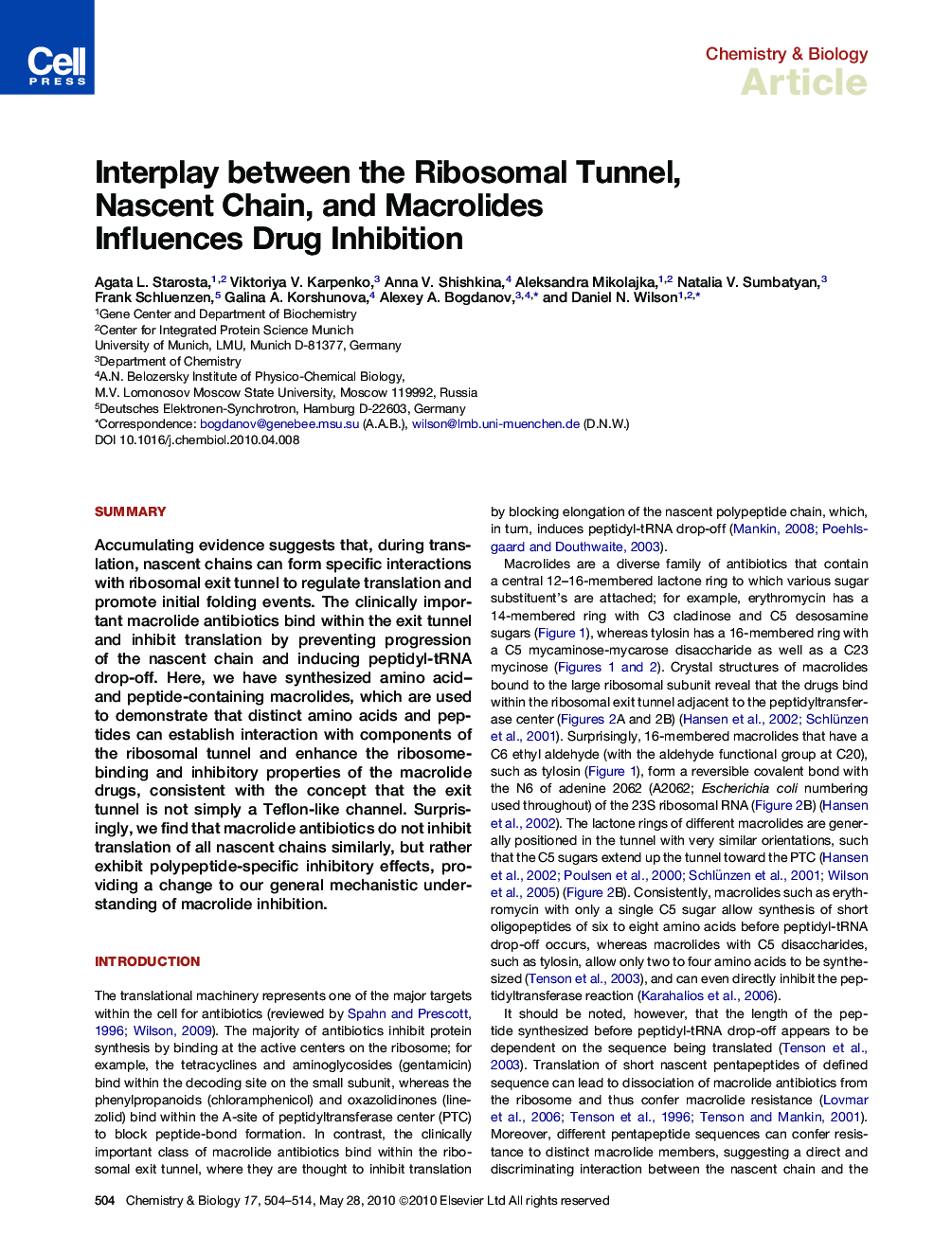| Article ID | Journal | Published Year | Pages | File Type |
|---|---|---|---|---|
| 1391590 | Chemistry & Biology | 2010 | 11 Pages |
SummaryAccumulating evidence suggests that, during translation, nascent chains can form specific interactions with ribosomal exit tunnel to regulate translation and promote initial folding events. The clinically important macrolide antibiotics bind within the exit tunnel and inhibit translation by preventing progression of the nascent chain and inducing peptidyl-tRNA drop-off. Here, we have synthesized amino acid– and peptide-containing macrolides, which are used to demonstrate that distinct amino acids and peptides can establish interaction with components of the ribosomal tunnel and enhance the ribosome-binding and inhibitory properties of the macrolide drugs, consistent with the concept that the exit tunnel is not simply a Teflon-like channel. Surprisingly, we find that macrolide antibiotics do not inhibit translation of all nascent chains similarly, but rather exhibit polypeptide-specific inhibitory effects, providing a change to our general mechanistic understanding of macrolide inhibition.
Graphical AbstractFigure optionsDownload full-size imageDownload high-quality image (181 K)Download as PowerPoint slideHighlights► Macrolides exhibit nascent polypeptide chain–dependent inhibition ► Peptides can form specific interactions with the ribosomal tunnel ► A covalent bond between tylosin and the ribosome is necessary for inhibitory activity
